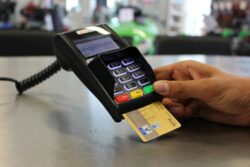The Dark Side of Overdraft Fees: Class Action Lawsuits Explained
This article provides a comprehensive exploration into the possibility of legal action against a financial institution in response to unauthorized transactions.

With an increasing number of financial transactions conducted digitally, the risk of unauthorized charges has escalated, prompting a need to understand one's rights and the obligations of banks under such circumstances.
This discussion will delve into processes for identifying unfamiliar charges, the responsibilities of banks, potential steps for dispute resolution, and the role of federal laws in these situations.
Furthermore, it will illuminate the potential role of legal counsel, probable outcomes of a lawsuit, and strategies for preventing future unwanted charges.
Insight will also be gained from previous case studies.
The intention is to equip readers with a robust understanding of their rights and the legal recourse available for unauthorized transactions.
Key Takeaways
- Recognize the importance of promptly reporting unauthorized charges to your bank and diligently monitoring subsequent account activity.
- Understand your rights as an account holder to dispute unauthorized transactions and seek legal counsel before initiating legal proceedings.
- Be aware of the responsibilities of banks to implement security measures, investigate unauthorized transaction claims, and provide customers with information on protecting their accounts.
- Familiarize yourself with federal laws such as the Electronic Fund Transfer Act and the Fair Credit Billing Act that safeguard consumers against financial fraud and provide protections for unauthorized transfers and credit card charges.
Recognizing Unfamiliar Charges
The initial step towards resolving a dispute about unrecognized charges involves meticulously scrutinizing bank statements and identifying any transactions that seem unfamiliar or suspicious. Understanding the nature of every transaction allows for accurate detection of potential anomalies. The application of fraud detection techniques is integral to this process. Rigorous monitoring of account activities and the use of advanced algorithmic systems can often identify aberrant transactions, aiding in the early detection of potential fraud.
In the context of unauthorized transactions, it is crucial to comprehend the implications of identity theft. This fraudulent activity involves the deliberate use of another individual's identifying information, generally for monetary gain. If an unauthorized transaction is a result of identity theft, the consequences could extend beyond financial losses. It could potentially lead to credit score damage, making it challenging for the victim to secure credit or loans in the future.
Account holders should be vigilant in reviewing their financial transactions regularly. Early detection of unauthorized transactions can significantly mitigate the negative outcomes associated with identity theft and fraud. If an unrecognized charge is identified, swift action should be taken to report the transaction to the financial institution. The banking institution is then required to investigate the matter.
Account holders have the right to dispute unauthorized transactions. However, the legal process to sue a bank can be complex and time-consuming. It is, therefore, advisable to seek legal counsel before initiating any legal proceedings. The legal framework provides protections for consumers, but understanding these rights and how to exercise them is critical in effectively addressing unauthorized transactions.
Understanding Bank Responsibilities
In comprehending the obligations and duties of financial institutions, it becomes crucial to recognize their role in safeguarding client funds against illicit activity. Banking Regulations stipulate that banks are required to implement security measures that protect their customers from fraudulent occurrences. Such measures are designed to prevent unauthorized transactions from taking place and to rectify the situation promptly when they do occur.
Under the Electronic Fund Transfer Act (EFTA), banks are obligated to investigate any claim of unauthorized transactions made by their customers. They are mandated to resolve these complaints within a stipulated timeframe, failing which they may be held legally liable. Ignoring these banking regulations can lead to severe consequences for the financial institution, including hefty fines and damaged reputation.
Customer Protection is a fundamental aspect of banking operations. The bank's responsibilities towards customer protection extend beyond merely offering secure banking platforms. They also include providing customers with adequate information on how to protect their accounts and swiftly addressing any unauthorized transaction claims. An important part of this process is to reassure customers of their rights and the measures in place to protect them.
When it comes to unauthorized transactions, banks are expected to follow regulatory guidelines diligently. Should a bank fail to meet its obligations, customers may have legal grounds to sue the bank for failing to protect their funds adequately. Thus, understanding the responsibilities of banks is pivotal in determining the feasibility and potential success of a lawsuit. A successful claim will not only lead to a financial remedy but may also prompt the bank to improve its security measures, thereby benefiting other customers.
Steps to Take When You Spot an Unknown Charge
Spotting an unfamiliar charge on a financial statement often necessitates immediate action, including thorough investigation and reporting of the matter to the respective financial institution.
Charge Identification is a crucial first step, requiring careful examination of the transaction details such as the amount, date, and payee. This process can help determine whether the charge is genuinely unauthorized or merely unrecognized due to unfamiliar vendor names or forgotten purchases.
Subsequent to the identification process, Transaction Tracking is critical. This involves tracing the transaction back to its origin, which can potentially reveal patterns or clues suggesting fraudulent activity. It is important to note that banks typically have sophisticated mechanisms in place to detect unusual transaction activities. However, these systems are not infallible and depend on the vigilance of account holders for optimal effectiveness.
Upon the discovery of an unauthorized transaction, it is imperative to report it to the bank promptly. This is because the time window for disputing such charges is often limited by law, and delay may result in the forfeiture of the right to a refund. Furthermore, such prompt reporting can serve as a valuable deterrent to potential fraudsters, signaling that their activities are being monitored and are likely to be detected.
While the bank investigates the unauthorized charge, it is advisable to monitor subsequent account activity closely. This can help identify any additional fraudulent transactions and provide valuable evidence in the event of a legal dispute. The diligence demonstrated in these steps can significantly strengthen the case should recourse to legal action become necessary.
The Role of Federal Laws
Federal laws play a pivotal role in safeguarding consumers against financial fraud, establishing a framework of rights and responsibilities that guide interactions between financial institutions and their clients. Notably, these laws provide consumers with recourse if they fall victim to unauthorized transactions on their bank accounts. This regulatory framework, comprising federal regulations and consumer protections, is crucial in maintaining the integrity and stability of the financial system.
Among the key federal regulations is the Electronic Fund Transfer Act (EFTA), which offers protection against unauthorized electronic transfers. Under the EFTA, a bank client's liability for unauthorized transactions is capped at $50 if the bank is notified within two business days of the discovery of the unauthorized transaction. The cap increases to $500 if the bank is notified after two business days but within 60 days.
Similarly, the Fair Credit Billing Act (FCBA) protects consumers from unauthorized credit card charges. If a cardholder disputes an unauthorized charge within 60 days, the FCBA limits their liability to $50. However, if the card has been lost or stolen, the cardholder's liability is zero if the card issuer is notified before any unauthorized charges are made.
These federal laws underscore the importance of prompt reporting of unauthorized transactions to limit potential losses. While suing a bank might be an option in certain circumstances, federal regulations ensure that consumers are not left to bear the financial burden of unauthorized transactions. It is this combination of federal laws and consumer responsibility that creates a balanced approach to tackling financial fraud.
Pursuing a Dispute with the Financial Institution
When a discrepancy arises in financial dealings, initiating a dispute with the relevant institution often serves as the first step towards resolution. This course of action is particularly prudent when fraudulent activities are suspected. The financial institution in question has an obligation to investigate any alleged unauthorized transactions promptly and thoroughly.
Dispute timing plays a crucial role in this process. According to the Electronic Fund Transfer Act, consumers must report any suspected fraudulent activity within 60 days of the statement date on which the transaction first appeared. By doing so, the liability of the consumer is limited to $50 or less. Should the consumer fail to report within this time frame, the potential liability could extend to $500 or even the total amount of unauthorized transactions if the financial institution can demonstrate that the transactions could have been stopped had they been reported earlier.
The financial institution is mandated to investigate the dispute and resolve it within 45 days. However, in cases where the institution requires more time, they are permitted to extend this period by 45 days, provided the consumer is given provisional credit for the disputed amount. It is important to note that institutions failing to adhere to these regulations may be subject to legal action.
While pursuing a dispute with a financial institution may not always yield the desired outcome, it is an essential step in mitigating the impact of unauthorized transactions. This process, when executed promptly and effectively, can serve to protect the consumer's rights and financial wellbeing.
The Process of Filing a Lawsuit
Navigating the intricate process of filing a lawsuit requires understanding the various stages involved, from drafting the initial complaint to navigating the complexities of court proceedings. The process begins with the drafting of a complaint, a legal document that outlines the plaintiff's claims against the defendant, in this case, the banking institution. The complaint articulates the unauthorized transactions, the bank's failure to address the issue satisfactorily, and the resulting damages suffered by the plaintiff. The lawsuit timeline then moves to the serving of the complaint to the defendant, which allows them to prepare a defense.
Choosing representation is a critical aspect of this process. Representation refers to acquiring a legal professional who can advocate on behalf of the plaintiff. The representative ensures that the lawsuit is filed within the statute of limitations, the legal timeframe to file a claim, and navigates the court procedures on behalf of the plaintiff. The representative also assists in the discovery process, where both parties exchange information pertaining to the case.
Upon completion of the discovery process, the case may go to trial if a settlement is not reached. The court then hears both sides before reaching a verdict. This process may take months or even years to complete, depending on the complexity of the case and the court's schedule.
The decision to pursue a lawsuit against a bank for unauthorized transactions is not one to be taken lightly. It requires careful consideration of the costs, both financial and emotional, as well as the potential benefits. The plaintiff should be mindful of the lawsuit timeline and the importance of obtaining competent representation. It is an arduous process but may be necessary to remedy financial losses and hold the bank accountable.
Role of Legal Counsel in Bank Disputes
Engaging a skilled legal professional to represent a client in disputes involving financial institutions is a crucial step that can significantly influence the outcome of the case. The selection of legal counsel is a pivotal decision which requires thorough consideration. Legal Counsel Selection should be guided by the lawyer's experience in banking laws, their track record in similar disputes, and their understanding of the bank's operations and procedures.
Once the legal counsel is chosen, the development of a robust strategy becomes imperative. Counsel's Strategy Development begins with a comprehensive analysis of the unauthorized transactions, the bank's security measures, and the client's interaction with the bank. This analysis helps identify potential weaknesses in the bank's defenses and areas where the client's rights may have been violated.
The legal counsel then prepares for possible defenses the bank might employ. This could include arguments such as the client's negligence leading to the unauthorized transactions. The counsel's strategy also involves establishing clear lines of communication with the bank, seeking an amicable resolution where possible. However, if negotiation fails, the counsel should be prepared to escalate the matter to court.
Throughout this process, the legal counsel keeps the client informed and involved, ensuring their interests are at the forefront of all decisions. The counsel's strategy development is a dynamic process, adjusting to new information and changes in the legal landscape.
The role of legal counsel in bank disputes goes beyond simple representation. It involves strategic planning, negotiating with the bank, and ultimately, ensuring the client's rights are upheld. This highlights the importance of careful legal counsel selection in disputes involving unauthorized transactions.
Potential Outcomes of a Lawsuit
In the aftermath of a lawsuit, there are various potential outcomes that can significantly impact both the client and the financial institution involved. The litigation consequences can be far-reaching, extending beyond the immediate financial implications to affect the reputations and future operations of both parties.
Lawsuit limitations exist, which can constrain the scope of potential outcomes. It is crucial to note that the legal system is not designed to provide a windfall to the aggrieved party but to restore them to the position they would have been in if the unauthorized transaction had not occurred. This may mean that even if a court finds in favor of the customer, the amount awarded may not exceed the loss incurred due to the unauthorized transaction.
The litigation consequences for the financial institution may include not only the potential financial loss from a successful lawsuit but also damage to its reputation. This could affect customer trust and confidence, impacting future business prospects. Additionally, a lawsuit can prompt reviews and changes in bank policies and procedures to prevent future unauthorized transactions.
On the other hand, lawsuit limitations may also protect financial institutions from excessive claims. For instance, the law may limit the amount that can be claimed in damages. Also, the bank may not be held liable if it can prove that it acted in good faith and with due diligence in handling the customer's account.
The potential outcomes of a lawsuit against a bank for unauthorized transactions are manifold and extend beyond the immediate financial implications. Both litigation consequences and lawsuit limitations shape these outcomes, influencing the landscape of bank-customer relations.
Preventing Future Unwanted Charges
Mitigating the risk of future unwanted charges requires a comprehensive understanding of the various mechanisms available to both individuals and financial institutions. These mechanisms range from basic account management practices to sophisticated fraud prevention measures, all designed to provide a robust defense against unauthorized transactions.
Fraud prevention measures constitute a significant part of this defense. Financial institutions invest heavily in advanced fraud detection systems that monitor transactions in real time, flagging suspicious activity for review. These systems use complex algorithms to identify patterns associated with fraudulent transactions, such as repeated attempts to charge a small amount to a customer's account. Once detected, such transactions can be blocked, protecting the customer's funds.
Individuals also have a role to play in preventing unwanted charges, particularly through vigilant account management. Regularly reviewing account statements enables early detection of any unauthorized charges. Promptly reporting such charges to the bank ensures timely resolution and potentially limits financial loss.
Credit monitoring services provide another layer of protection. These services alert individuals to changes in their credit reports, such as new accounts opened in their name or changes to their existing accounts. By promptly responding to these alerts, individuals can prevent further unauthorized charges and mitigate the potential impact on their credit scores.
Maintaining open and regular communication with banking institutions is crucial. Timely reporting of any suspected fraudulent activity enables the bank to take swift action, potentially preventing further unauthorized transactions.
It is evident that a multifaceted approach, combining proactive account management, use of credit monitoring services, and robust bank-provided fraud prevention measures, is essential in safeguarding against future unwanted charges.
Learning from Case Studies
Having explored the strategies for preventing future unwanted charges, it is essential to delve into the practical aspect of this subject. This can be achieved through a case study analysis, which provides a comprehensive understanding of how unauthorized transactions are addressed in real-life scenarios.
Case studies offer invaluable insights into the complexities of fraudulent charges investigation and the potential legal remedies available to victims. By examining real instances, one can glean crucial information about the legal implications of unauthorized transactions, the procedures for reporting such incidents, and the court's response to these issues.
For instance, in one notable case, a consumer sued their bank after discovering multiple unauthorized transactions on their account. The bank had failed to notify the client of these suspicious activities, leading to significant financial loss. The court found the bank liable for not adhering to its duty of care to its customers, as stipulated by the law. This case underscores the legal responsibility banks have towards their customers in ensuring transactions are authorized.
In another case, a bank was sued for failing to conduct a thorough fraudulent charges investigation after a customer reported an unauthorized transaction. The court ruled in favor of the client, stating that banks are obligated to investigate any reports of unauthorized transactions diligently.
These case studies highlight the importance of rigorous fraudulent charges investigation and the potential grounds for legal action against banks. They also underscore the necessity for consumers to stay vigilant and promptly report any suspicious activity in their accounts. While these cases provide guidance, each situation is unique, and the outcome depends on the specific circumstances.
Frequently Asked Questions
What type of attorney should I consult for a bank dispute?
When seeking resolution for a bank dispute, consultation with a lawyer specializing in financial or banking law is advised. A competent attorney will have the expertise to navigate the complexities of financial regulations, thereby increasing the likelihood of a favourable outcome. Hence, it is crucial to select an attorney well-versed in the relevant laws and experienced in dealing with similar cases.
While legal consultation costs may vary, the benefits of choosing the right attorney are substantial.
How long does the bank dispute process typically take?
The duration of the bank dispute process varies significantly depending on the complexity of the case and the efficiency of the bank's dispute resolution mechanism. Incorporating transaction monitoring can expedite the process, as it can provide crucial evidence early on.
On average, the process can take between 45 to 90 days. However, more intricate cases involving multiple transactions may extend beyond this timeframe.
It is essential to maintain regular communication with the bank to ensure a timely resolution.
Can I sue my bank if I am not a U.S. citizen but the unauthorized transaction happened in the U.S.?
The immigration status of an individual does not generally impact the ability to initiate legal action within the U.S. jurisdiction.
The location of the unauthorized transaction, being within the U.S., heightens its relevance to U.S. law.
Therefore, irrespective of citizenship, legal recourse may be pursued against a bank for unauthorized transactions.
However, the success of such action is contingent on evidence, jurisdictional matters, and the specifics of the unauthorized transaction.
Can I still file a lawsuit if the unauthorized transactions happened several years ago?
The ability to file a lawsuit for unauthorized transactions that occurred years ago largely depends on the statute of limitations, which varies by jurisdiction.
Statute limitations establish a time limit for pursuing legal actions from the date of the alleged offense.
Maintaining accurate transaction documentation is crucial as it provides evidence of the unauthorized activity.
Therefore, if the statute of limitations has not expired and substantial transaction documentation is available, a lawsuit may be possible.
Are there any specific laws protecting senior citizens from unauthorized bank transactions?
Various laws and regulations aim to protect senior citizens from financial exploitation, including unauthorized bank transactions.
The Senior Fraud Prevention Act, for instance, mandates the Federal Trade Commission to disseminate information on scams targeting seniors.
Further, states have laws against elderly financial exploitation, which cover unauthorized banking transactions.
Thus, legal protections are in place, and victims of such fraudulent activities can seek recourse through the appropriate legal channels.
Conclusion
In conclusion, legally challenging a financial institution for unauthorized transactions necessitates a thorough understanding of federal laws, bank responsibilities, and effective dispute resolution procedures. Engaging legal counsel can be instrumental in navigating these complexities.
However, preventive measures remain of paramount importance in averting such issues. Learning from past case studies provides valuable insights to ensure financial security and maintain a healthy relationship with one's bank.

This post has been generated by AI and was not reviewed by editors. This is Not legal advice. Please consult with an attorney.




